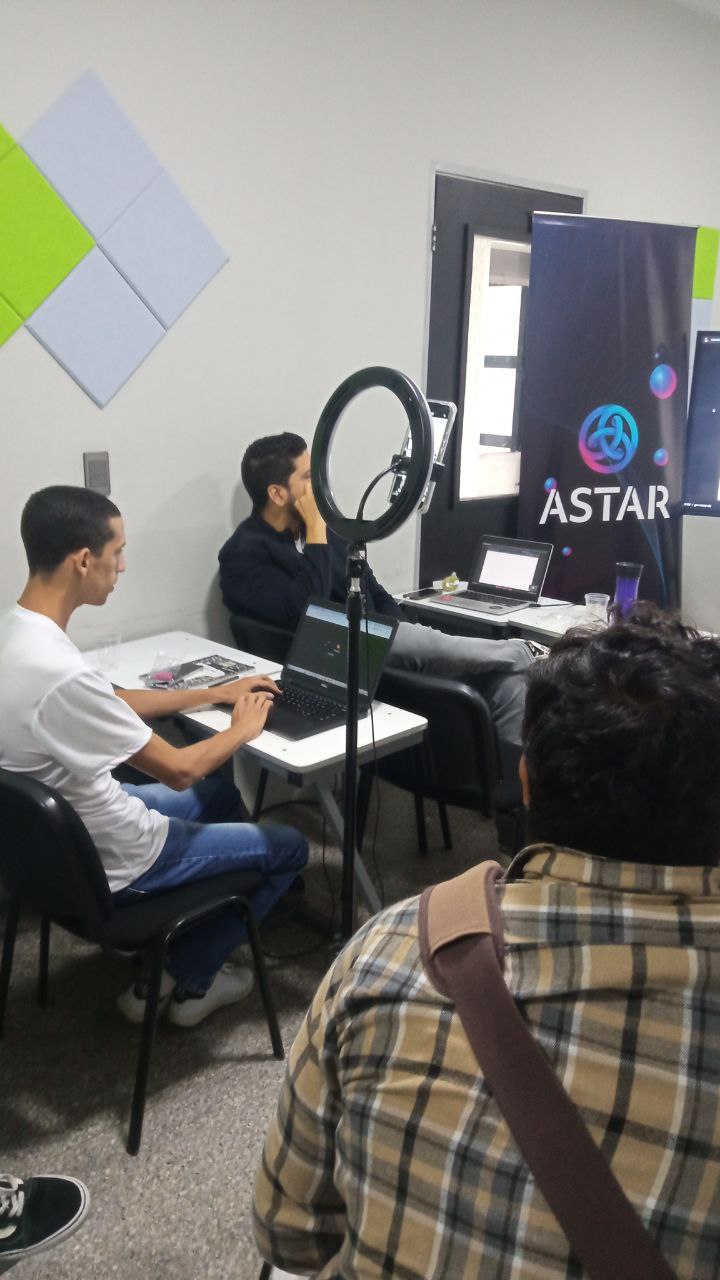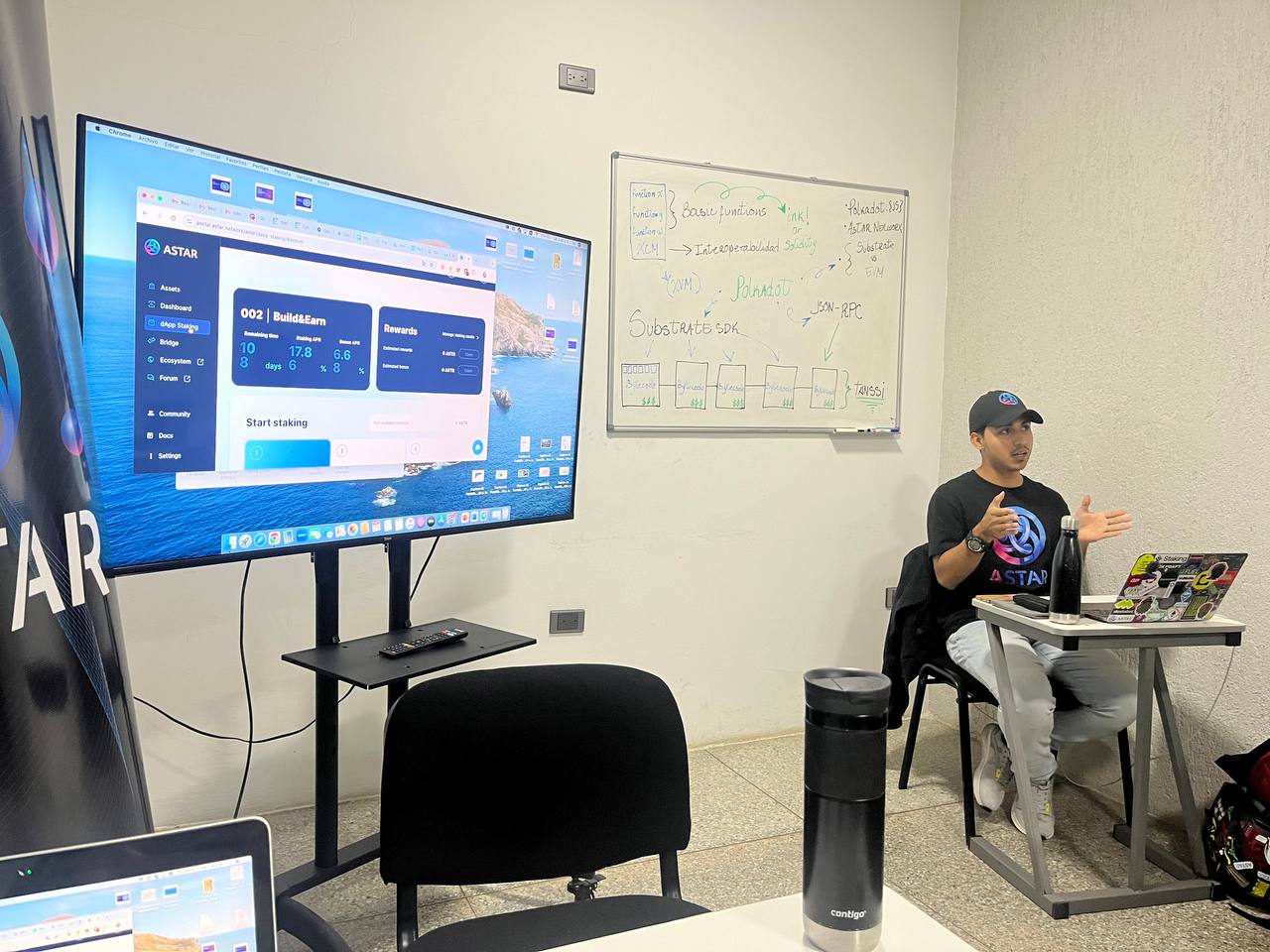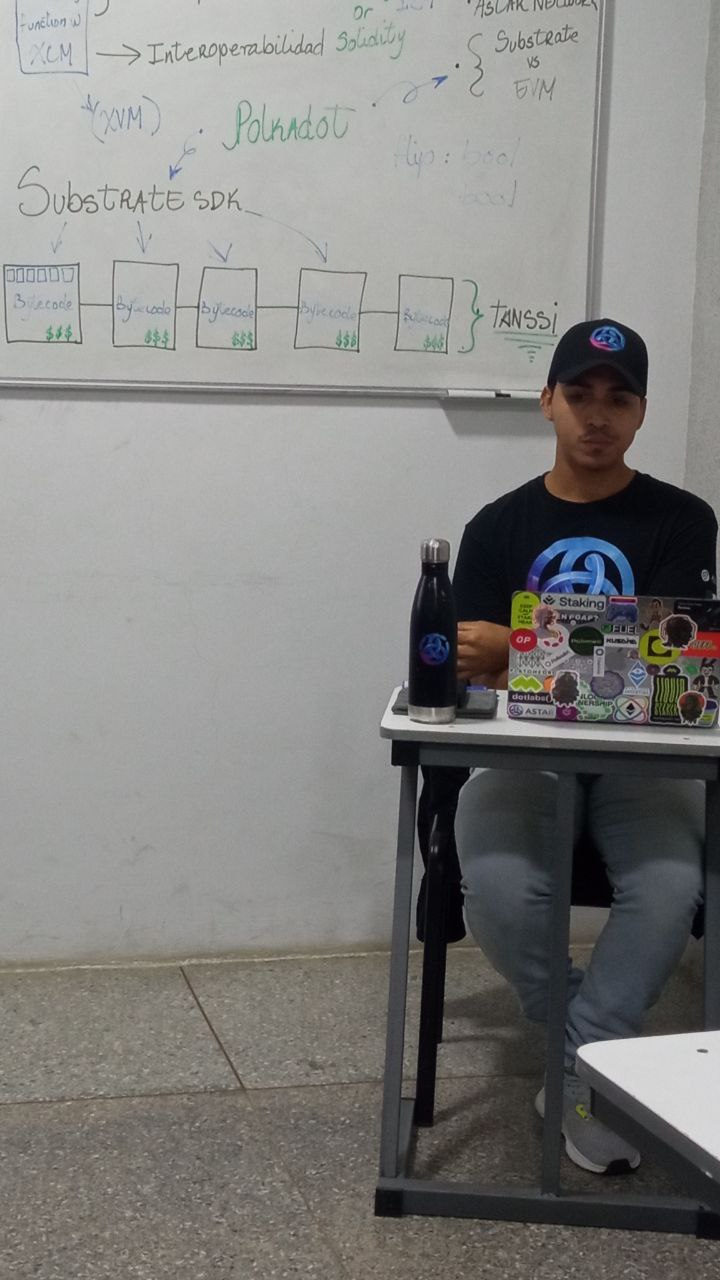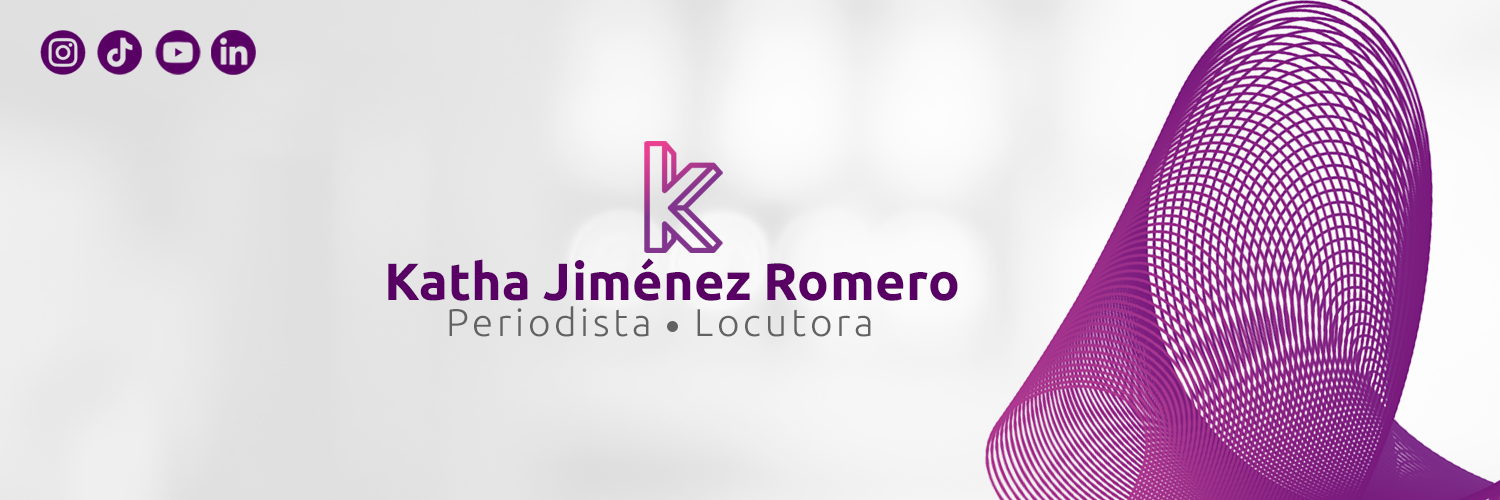La web3 se sigue abriendo camino a través de la formación de programadores en la blockchain de Polkadot en el primer Workshop técnico intensivo: Speedrun, que se realizó por primera vez en Venezuela y donde los asistentes recibieron formación por dos días consecutivos en la ciudad de Valencia.

Los asistentes se formaron en las áreas de rust, substrate, smart contracts,EVM en Polkadot, RPCs y APIs, además de XCM y XVM, durante la tarde del viernes 28 y la mañana del sábado 29 de junio en el Espacio Cowork.
Esta actividad se suma al conjunto de formaciones que el quipo de Polkadot ha estado realizando en el país en los últimos meses de la mano de Ezio Rojas, DV delegado de Polkadot y coorganizador de la Caracas Blockchin Week, junto a Carlos Rodríguez, embajador de Astar Network.

Rojas aseguró que con este tipo de eventos en el país quieren demostrar que el desarrollador venezolano puede construir, puede crear dentro de la Web3, solo le falta las oportunidades.
“Esta es precisamente una oportunidad para los que sueñan, para los que se atreven a inventar y a crear un mundo nuevo en lo digital. Desde Polkadot queremos incentivar eso, para lograr traer y generar más desarrolladores dentro de la región”.

Luis Rivas, programador y creador de contenido en la blockchain de hive @luis96xd expresó que a través de estas actividades “primero conocemos el ecosistema, podemos aprender como programar dentro de la blockchain y pudimos aprender”.
Álvaro Pérez, consultor web y desarrollador asistente, mencionó que esta “fue una actividad bien específica sobre el desarrollo de Polkadot. Me llevo las herramientas que necesito para hacer un contrato inteligente dentro del proyecto. Me gustaría seguir viendo estas actividades en Venezuela para aprovechar las oportunidades que las empresas puedan dar para trabajar con sus plataformas”.

Polkadot, junto a su moneda nativa DOT, se presenta como un ecosistema blockchain que prioriza la interoperabilidad y la escalabilidad. Su arquitectura, compuesta por una cadena principal llamada Relay Chain y múltiples cadenas paralelas conocidas como parachains, la convierte en una plataforma para el desarrollo de aplicaciones descentralizadas (DApps) de próxima generación.
Historia y evolución
Los orígenes de Polkadot se remontan al 2016, cuando Gavin Wood, Robert Habermeier y Peter Czaban unieron fuerzas para dar vida a este proyecto. Sin embargo, su lanzamiento oficial no se produjo hasta el 2020.

En sus inicios, Polkadot operaba bajo un modelo de prueba de autoridad (PoA), donde solo seis validadores seleccionados por la Fundación Web3, entidad supervisora del proyecto, tenían la potestad de validar bloques.
A medida que la red ganaba interés y participación, se implementó un sistema de consenso de prueba de participación nominada (NPoS), conocido como Nominated Proof-of-Stake (NPoS), donde los usuarios podían delegar sus tokens DOT para apoyar a los validadores de su elección.

Ecosistema de Polkadot: Un enfoque modular y escalable
El ecosistema de Polkadot se caracteriza por su estructura modular, donde la cadena principal Relay Chain sirve como columna vertebral y punto de interconexión para las parachains, cadenas de bloques paralelas e interoperables que funcionan de forma independiente. Esta arquitectura permite distribuir la carga de trabajo y la escalabilidad de manera eficiente, optimizando el rendimiento general del ecosistema.
ENGLISH (click here!)
The web3 continues to make its way through the training of programmers on the Polkadot blockchain in the first intensive technical workshop: Speedrun, which was held for the first time in Venezuela and where attendees received training for two consecutive days in the city of Valencia.

The attendees were trained in the areas of rust, substrate, smart contracts, EVM in Polkadot, RPCs and APIs, as well as XCM and XVM, during the afternoon of Friday June 28 and the morning of Saturday June 29 at Espacio Cowork.
This activity is added to the set of trainings that the Polkadot team has been conducting in the country in recent months by Ezio Rojas, DV delegate of Polkadot and co-organizer of the Caracas Blockchin Week, along with Carlos Rodriguez, ambassador of Astar Network.

Rojas assured that with this type of events in the country they want to demonstrate that the Venezuelan developer can build, can create within the Web3, he only lacks the opportunities.
"This is precisely an opportunity for those who dream, for those who dare to invent and create a new digital world. From Polkadot we want to encourage that, to bring and generate more developers in the region".

Luis Rivas, programmer and content creator in the hive blockchain @luis96xd expressed that through these activities "first we know the ecosystem, we can learn how to program within the blockchain and we were able to learn".
Alvaro Perez, web consultant and assistant developer, mentioned that this "was a very specific activity about Polkadot development. I take with me the tools I need to make a smart contract within the project. I would like to continue seeing these activities in Venezuela to take advantage of the opportunities that companies can provide to work with their platforms".

Polkadot, along with its native currency DOT, is presented as a blockchain ecosystem that prioritizes interoperability and scalability. Its architecture, composed of a main chain called Relay Chain and multiple parallel chains known as parachains, makes it a platform for the development of next-generation decentralized applications (DApps).
History and evolution
Polkadot's origins date back to 2016, when Gavin Wood, Robert Habermeier and Peter Czaban joined forces to bring this project to life. However, its official launch did not occur until 2020.

In its early days, Polkadot operated under a proof-of-authority (PoA) model, where only six validators selected by the Web3 Foundation, the project's overseeing entity, had the power to validate blocks.
As the network gained interest and participation, a consensus system of Nominated Proof-of-Stake (NPoS), known as Nominated Proof-of-Stake (NPoS), was implemented, where users could delegate their DOT tokens to support validators of their choice.

Polkadot's Ecosystem: A modular and scalable approach
The Polkadot ecosystem is characterized by its modular structure, where the main Relay Chain serves as the backbone and interconnection point for the parachains, parallel and interoperable blockchains that operate independently. This architecture allows for efficient workload distribution and scalability, optimizing the overall performance of the ecosystem.
Las fotos y contenido aquí compartido con ustedes son de mi autoría. Las fotos fueron tomadas con mi teléfono Redmi Xiaomi 9. Y la traducción al inglés fue realizada con DeepL
The photos and content here shared with you are my authorship. The photos were taken with my Redmi Xiaomi 9 phone. And the English translation was done with DeepL.

Posted Using InLeo Alpha